Thelonious Monk - 1957
‘Crepuscule with Nellie’ was first released on the 1957 album ‘Monks Music’. It’s a great example of how Monk approached harmony, melody and the piano itself.
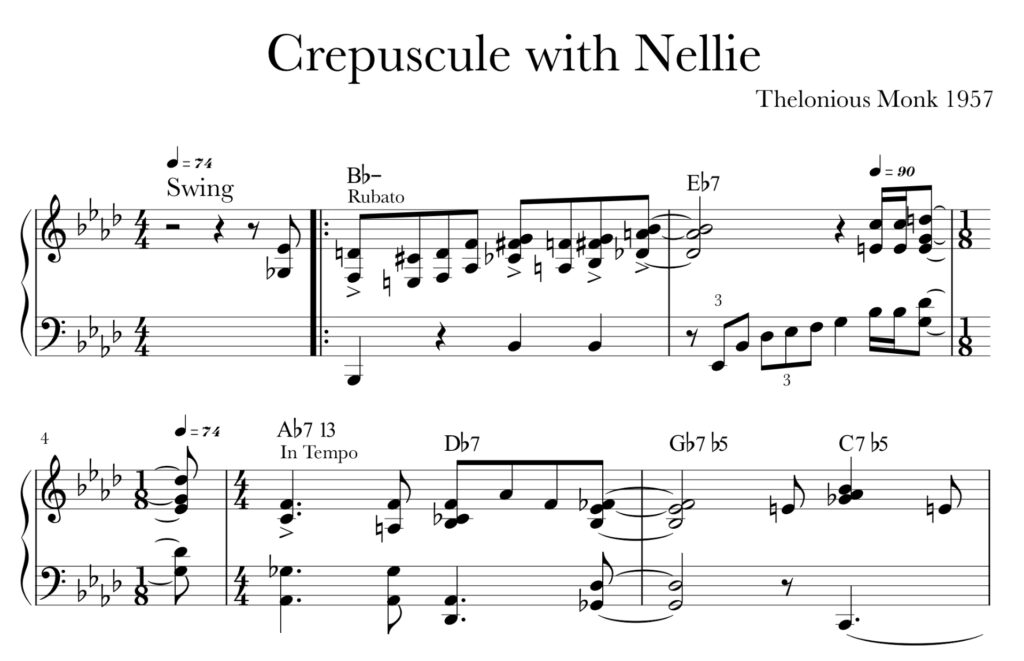
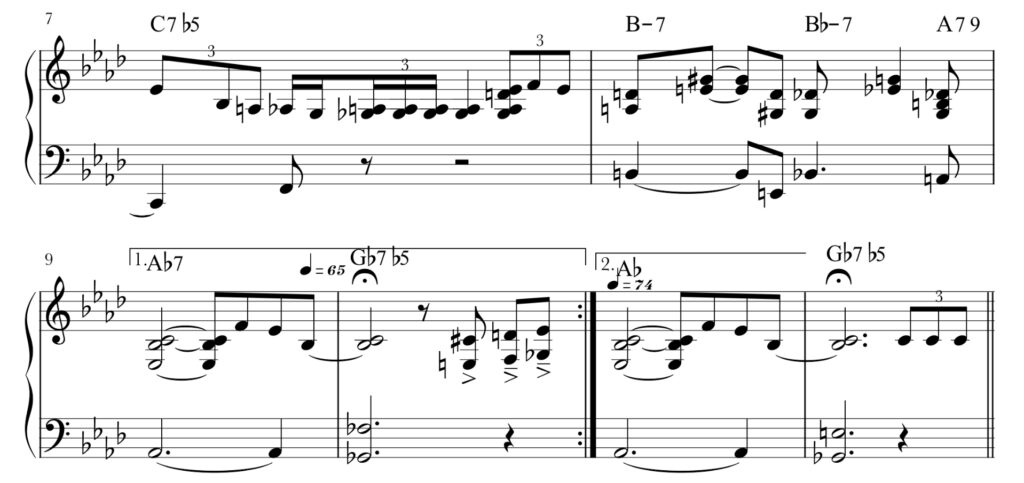
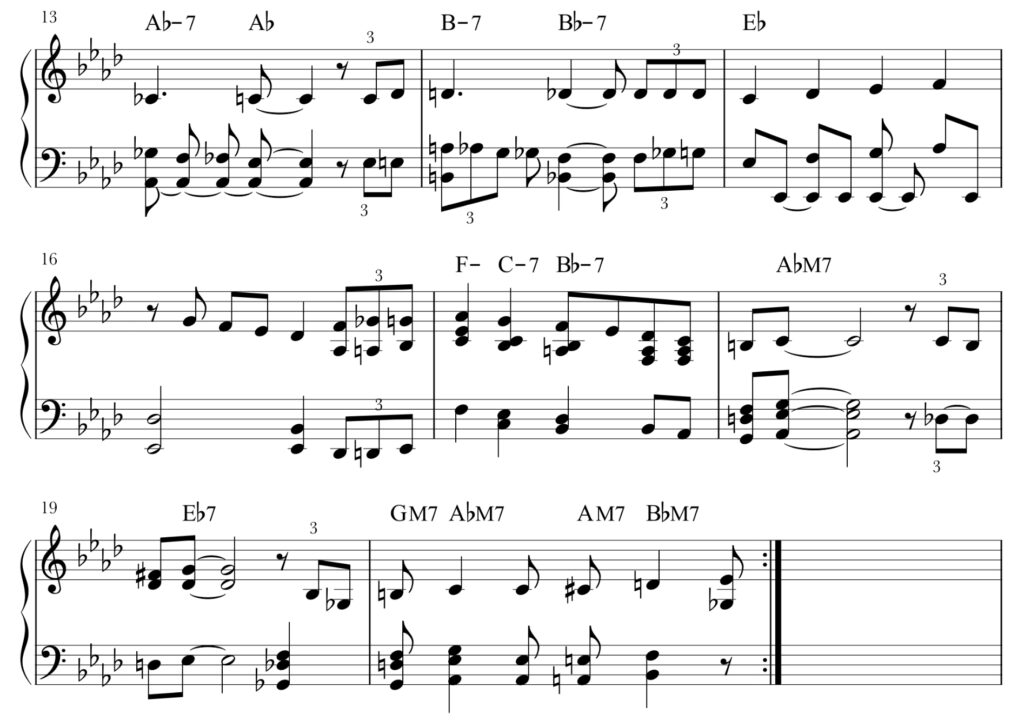
Any transcription that I have seen puts ‘Crepuscule’ in the key of Bb. We have it in Ab major. So how do you go about deciding what key a piece of music is in? First thing is to listen for points of resolution. The first time this piece “rests” is on bar three. The Ab feels like a destination. This is reinforced by the entrance of the drums and bass at this point. Listen to the rest of the piece looking for other points of resolution. The second way to choose a key signature is to follow the bass line but as we move toward the 1960s and 70s this can lead us astray – remember Jazz is all about toying with expectations. Thirdly, look for logical or familiar progressions. If we put this piece into the key of Ab the first three bars turn out to be a familiar II – V – I rather than a somewhat awkward I – III – VI if it was in Bb.
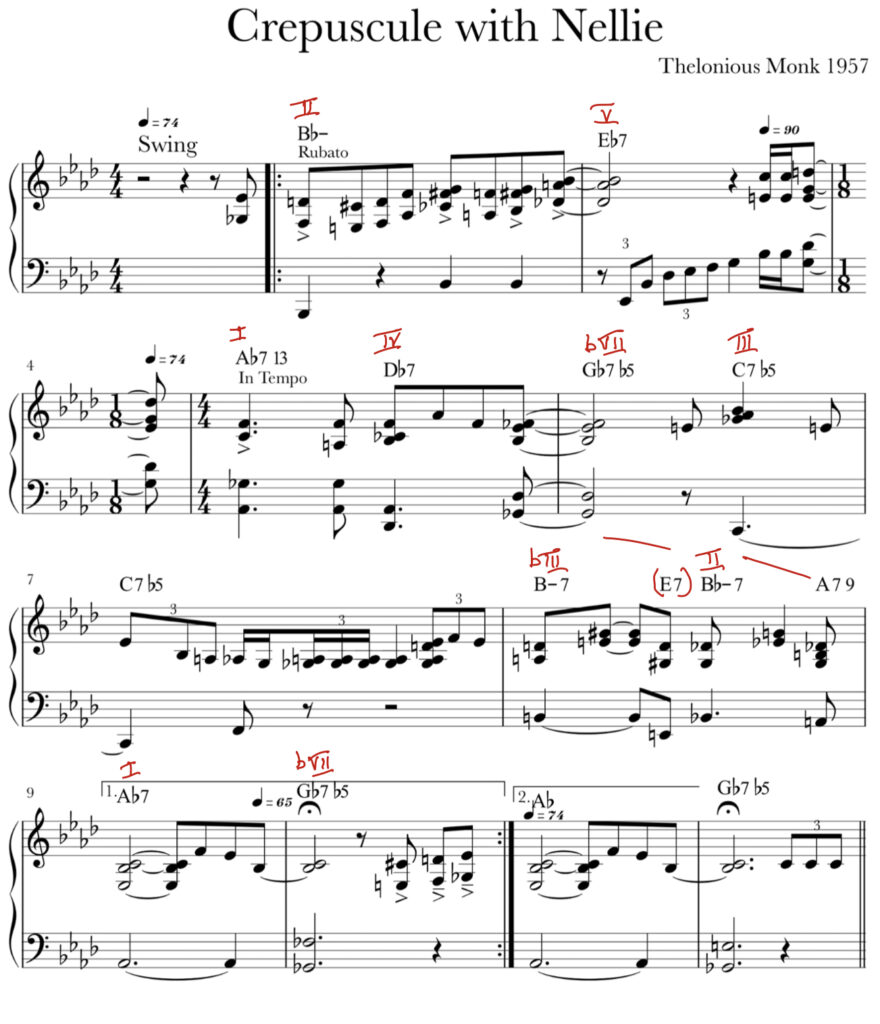
Let’s take a moment to look at that Gb7b5 in bar 10. It not only tells us something about dominant 7th substitutions but it shows us how important the b5 chord is to Monk’s sound.
The Gb7b5 is a bVII chord to the tonic Ab. A bVII chord is sometimes used as a substitution for a V chord. We now have two substitutions for the dominant 7th chord. One approaches the tonic from a half step above the other from a whole step below. The first is called a “Tritone” substitution (discussed in “Donna Lee Harmony” Link); the second is sometimes called a “Backdoor” substitution (Link).
Example 1 shows the three resolutions in ‘C’.
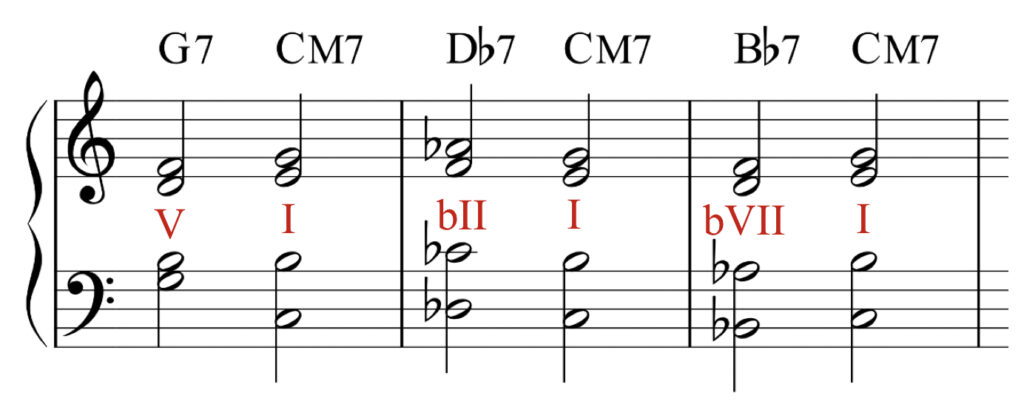
Every musician is going to think about these chord sequences differently. The most basic observation is that it is common practice to have chord changes move around the Cycle of Fifths (II-V-I) or to have them move by tones and semitones. ‘Crepuscule’ has lots of examples of whole and half step movement.
But what about that b5 on the Gb7? It turns out this is one of the important devices that create the “Monk Sound”.
Flatting the 5th of this chord makes it symmetrical (intervals of a second, a third and another second). The chord now has a relationship with the whole-tone scale that Monk uses constantly.
Some might say this makes the chord “ambiguous” but I like to think of it as “multi-purpose”. That is, it offers various options of where you can go next.
Example 2 shows us how this chord (or it’s inversion) resolves nicely to either the tonic (Ab) or the Bb that takes us back to the beginning of the song. Finally, this brings us full circle – It helps explain why most transcriptions put this piece in the key of Bb.

